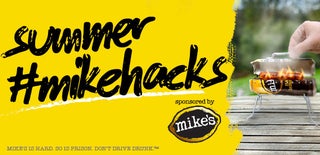Introduction: Slow Smoked Brisket
Down here in Texas, brisket is a staple for BBQ cookouts and it holds the highest prestige of any category in BBQ competitions. This past weekend (July 4-5, 2014), my team and I competed in a BBQ competition in Smithville, TX and decided to do something different. Here is how to make award winning brisket on a budget.
Step 1: Simple Tools
We decided to do the entire competition with what we could fit in the back of a minivan. Was it a challenge? Of course. Not everyone has the thousands of dollars lying around it takes to purchase a trailer and a large smoker to cook all of the meats required to do a BBQ competition. The smoker we used was a Dyna-Glo offset stick/charcoal burner (purchased it on Amazon.com for around $160). All in all it ended up handling and cooking 26.5 pounds of meat (brisket, three racks of ribs, and two whole chickens butterflied out). It was the only grill we used for the entire competition and we were quite pleased.
Step 2: Brisket Prep
We used a 7.37 pound brisket purchased from Wal-Mart. After you get your area setup with your table and tools, cut off the plastic wrapping and drain the excess blood. After this, go ahead and wash off the meat and pat it dry with paper towels. Once dry, start your trimming; some people don't like to trim the fat and some do. I like my fat cap to stay only about 1/2 inch thick. I find this allows the heat and smoke to go through the fat but there is still enough to keep the meat moist. After the fat is trimmed, go ahead and take the membrane off the back of your brisket; this allows the rub and smoke to penetrate the meat.
Step 3: Injection and Rub
For the injection, I use a smaller needle so the holes into the meat are not large. The injection is going to be some apple juice and apple cider vinegar with some beef bullion dissolved in it. This reenforces the beef flavor of the brisket and does not change the flavor profile. Make sure you inject with the grain, not against, because if you inject against, it will pool in one spot and give you dark spots within the meat. After inject, sprinkle your rub on all sides and edges. We did it on all sides, just didn't take all of the pictures. The rub helps give you the bark on the outside of the meat. The rub consists of a commercial brisket rub, black pepper, garlic powder, and a few other proprietary ingredients. The basic thing to remember when building your rub is where you are cooking and who you are cooking for. Texas flavors for brisket are pepper and a little salt while other regions like to sauce their meat or use more vinegar to get a twang.
Step 4: Smoking the Meat
For the 7.37 pound brisket, we cooked it at 210 degrees for 10 hours; the rule of thumb is between 1 and 1.5 hours a pound for cook time but you really rely on temperature. The wood used was hickory and pecan (both can be found at Wal-Mart or online as chips). During the first four hours, the brisket was sprayed every hour with an apple juice mix to keep it moist.
Step 5: Wrapping and Finishing
After four hours, take the brisket off and get ready to wrap it. Make sure to use extra heavy duty foil or an aluminum pan with tin foil over the top. This will help keep the juices around the meat. When you take the brisket off to wrap, mop or pour on some sauce and then wrap it tight to keep all that liquid in.
Step 6: Rest Time
After six hours or whenever the internal temperature reaches 190-195 degrees, pull the brisket off the heat source. This temperature is needed to render the fat that is in and on top of the meat so that it is not a glob of fat but rather a natural juice source for the brisket. Do not open the foil, this will cause you to lose all of that juice and heat. Make sure there are no holes and then wrap the brisket in a couple large towels for insulation and let it rest in a cooler or on a table for at least an hour. This competition we let it rest for 1.5 hours. This allows the brisket to continue to cook for just a bit and then soak up all of those juices back into the meat.
Step 7: Slice and Serve
After the rest period open up your brisket and look at the awesomeness you just produced. Be careful when removing it from the foil so you don't mess up the bark. Sharpen your knives and then slice and serve. This was a great brisket, ended up taking 7th or 8th overall I believe. Not bad for a team with a $160 smoker and a small brisket. Enjoy your brisket.

First Prize in the
BBQ Contest

Participated in the
Summer #mikehacks Contest











